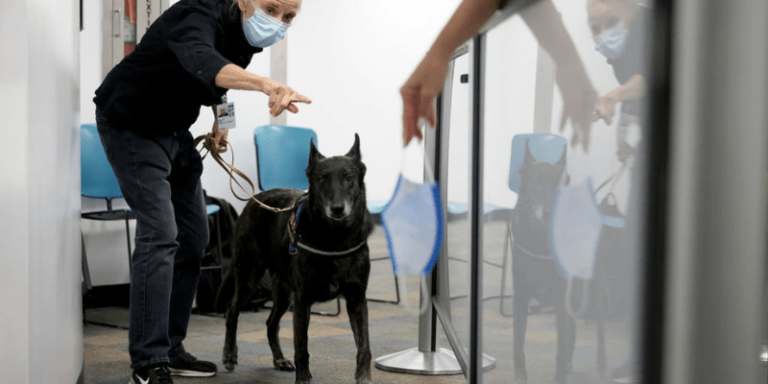Are Dogs the Future of COVID Testing?
PCR tests don’t really work – and dogs could be the solution.
By: Pennel Bird | June 11, 2021 | 337 Words

(Photo by Joe Raedle/Getty Images)
Trained canines may be the next big thing in COVID testing. PCR tests, which is short for “polymerase chain reaction” tests, were used to detect COVID-19, but they were known to be ineffective. The New York Times reported they could show as little as 10% efficacy, yielding millions and millions of false positives worldwide. Well-trained dogs have a much better track record.
Natural Gifts
Humans have roughly five million scent receptors. Dogs have around 300 million of them, giving them a big advantage in the smelling and sniffing department. Drug sniffing dogs are used to find the lawless. Using a piece of clothing worn by a missing person can help a dog locate people gone missing or abducted. Dogs have also been taught to detect maladies, including cancer, diabetes, and malaria. And now – for the first time – dogs are being trained to detect a viral disease in human beings.
Pooches Over PCR
The World Health Organization announced in January 2021 that the false-positives from PCR tests were too high during 2020. The WHO is now moving to COVID-sniffing dogs and has coordinated an international task force to investigate if the canines can have widespread use.
Dogs can be trained to detect COVID for a fraction of the cost of PCR tests and can be ready to report for duty in just a few short weeks – and even faster if the dogs are already trained to detect bombs or explosives. The dogs can learn to detect COVID with somewhere between 82% to 99% sensitivity. This is a considerable improvement over the PCR tests.
A recent study published in the British Medical Journal (BMJ) showed an average detection rate of 94% – which is impressive by any standard. Already, places as diverse as the NBA, the Beirut airport, and construction firms in London are using the clever canines to lower the costs and improve COVID testing.
Thanks to man’s best friend, we may now have a far more reliable way to test for the virus that paralyzed planet Earth for over a year.
















